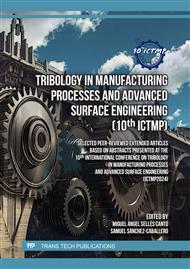p.3
p.11
p.17
p.25
p.33
p.41
p.51
p.61
Dynamic Mechanical Properties and Corrosion Resistance of Epoxy Coatings Enhanced with MXene and Diverse Nano-Fillers
Abstract:
This comparative study explored the dynamic mechanical characteristics and resistance to corrosion of four distinct nanofillers; MXenes, Graphene Nanoplatelets (GNPs), Carbon Nanotubes (CNTs), and Halloysite Nanotubes (HNTs) within epoxy composites at low loading concentrations (0.1 wt.%). The study assessed the influence of nanofiller on dynamic mechanical properties, while Open Circuit Potential (OCP) and Tafel analyses were used to evaluate corrosion resistance of the coated samples. The dispersion analysis was carried out using both UV-Vis spectrophotometry and scanning electron microscope Scanning electron Microscopy (SEM) technique. It was observed, there is notable decrease in storage modulus arises from poor nanofiller dispersion within the matrix and limited interaction between nanofillers and polymer chains. The incorporation of nanofillers typically leads to an increase in Tg, as observed with the highest Tg value (83.79 °C) in the GNPs sample, indicating restricted molecular motion and reduced free volume due to filler dispersion, resulting in enhanced crosslinking and significant changes in polymer chain dynamics. The OCP curve significantly decreased for the MXenes/epoxy coating (from 0.1827 V to 0.0454 V), indicating increased coating stability and better corrosion resistance behaviour. However, further processing improvement is needed to enhance the dispersibility of MXenes in the polymer matrix, as shown by SEM images showing agglomerates within the nanocomposite sample.
Info:
Periodical:
Pages:
25-32
Citation:
Online since:
March 2025
Price:
Сopyright:
© 2025 Trans Tech Publications Ltd. All Rights Reserved
Share:
Citation:



